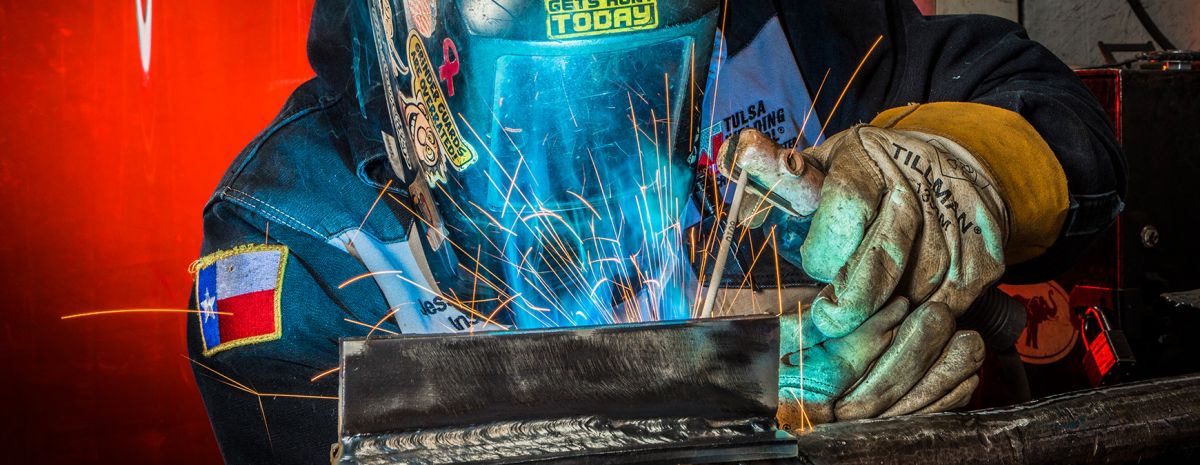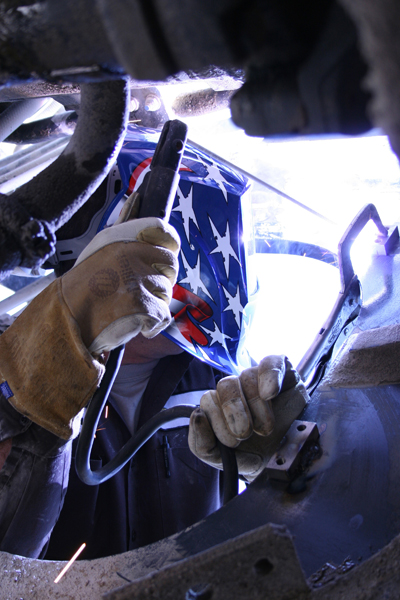Red flags in welding repair and what Belgrade can do about them
Wiki Article
Everything about Welding: Key Insights Into Techniques and Best Practices for Success
Welding encompasses a range of methods, each fit for certain products and applications. Comprehending these techniques, such as GMAW, SMAW, and TIG, is necessary for attaining suitable outcomes. The right devices and security practices can not be forgotten. As prep work and repairing play vital roles in the welding procedure, mastering these aspects can substantially boost the top quality of the end product. What are the key factors that assure an effective weld?Comprehending Different Welding Techniques
Welding techniques incorporate a selection of methods, each suited to specific applications and materials. Amongst one of the most common strategies are Gas Metal Arc Welding (GMAW), Shielded Steel Arc Welding (SMAW), and Tungsten Inert Gas Welding (TIG) GMAW, likewise called MIG welding, is preferred for its speed and flexibility, making it suitable for thin products. SMAW, or stick welding, is favored for its simpleness and efficiency in outdoor settings, specifically with thicker metals. TIG welding provides accuracy and control, making it ideal for complex work and non-ferrous metals (Montana Mobile Welding and Repair). Each technique has its unique benefits and factors to consider, permitting welders to pick the most effective method based upon the task's requirements, material kind, and wanted results. Understanding these methods is essential for effective weldingNecessary Welding Equipment and Devices
While different welding techniques need specific skills, the appropriate devices and tools are just as essential for attaining top quality results. Important welding devices includes welding devices, which vary depending upon the method-- such as MIG, TIG, or stick welding. Protective gear, including handwear covers, helmets, and aprons, assurances safety and security and comfort throughout the procedure. Additionally, components and clamps assist safeguard materials in position, making sure precision in welds. Consumables like welding rods, cable, and protecting gas are additionally crucial elements that influence the top quality of the weld. Tools such as mills and cutters facilitate surface area prep work and post-weld completing, adding to a specialist result. Investing in top notch devices eventually enhances the efficiency and performance of welding tasks.Safety Practices in Welding
Correct safety practices are vital in the welding market to shield employees from potential hazards. Welders have to put on proper personal safety devices (PPE), consisting of headgears with appropriate shading, gloves, and flame-resistant garments. Adequate air flow is important to minimize exposure to harmful fumes and gases generated during the welding procedure. Furthermore, workers must be educated in the appropriate handling of welding tools to prevent accidents. Fire precaution, such as keeping flammable products far from the welding area and having fire extinguishers readily offered, are essential. Routine evaluations of equipment and work areas can assist determine potential risks prior to they cause accidents. By sticking to these safety and security techniques, welders can create a much safer working atmosphere and decrease dangers associated with their profession.Preparing Materials for Welding
Preparing products for welding is an essential step that greatly influences the high quality and honesty of the final item (Welding). Proper preparation involves cleaning up the surfaces to remove contaminants such as oil, dust, and corrosion, which can endanger the weld. Strategies such as grinding, fining sand, or making use of solvents are commonly employed to achieve a clean surface. In addition, ensuring that the materials fit with each other comfortably is vital; voids can cause weak welds. It's additionally welders near me important to take into consideration the alignment and positioning of the elements, as this will affect the ease of welding and the last outcome. Ultimately, choosing the ideal filler product and guaranteeing compatibility with the base metals is necessary for attaining solid, long lasting weldsTips for Achieving High-Quality Welds
Attaining top notch welds requires focus to detail and adherence to best methods throughout the welding procedure. Correct joint preparation is necessary, guaranteeing surface areas are tidy and totally free from impurities. Selecting the ideal filler material and welding method based upon the base steels is critical for optimal bonding. Keeping consistent traveling rate and angle while welding can promote and prevent flaws uniformity. Furthermore, managing warm input is important; extreme warmth can lead to warping and damaged joints. Routinely inspecting the welds during the process enables instant changes if necessary. Employing suitable post-weld treatments, such as cleaning and stress relief, can enhance the resilience and stability of the weld, inevitably guaranteeing a successful outcome.Repairing Common Welding Issues
Welding typically presents obstacles that can impact the top quality and stability of the end product. Usual concerns such as porosity, irregular weld beads, and getting too hot can emerge, each calling for details repairing techniques. Understanding these troubles is crucial for welders to improve their skills and attain excellent outcomes.Porosity Problems Clarified
Although porosity can usually be ignored, it remains a critical problem in welding that can compromise the honesty of a finished item. Porosity describes the existence of little gas pockets within the weld bead, which can lead and damage the joint to premature failing. This issue normally arises from pollutants, dampness, or improper protecting gas coverage during the welding procedure. To mitigate porosity, welders ought to validate that the base materials are completely dry and clean, use ideal protecting gases, and keep regular welding specifications. Routinely checking the tools and environment can also assist recognize potential issues before they materialize in the weld. Addressing porosity properly is important for attaining solid, resilient welds that fulfill quality requirements.
Inconsistent Weld Beads
Inconsistent weld beads can greatly influence the high quality and strength of an ended up item. Numerous variables add to this problem, including inappropriate traveling speed, incorrect amperage setups, and inconsistent electrode angles. When the welder moves also swiftly, a bead might show up slim and do not have penetration, while relocating as well slowly can click for info create excessive build-up. Furthermore, using the incorrect amperage can result in either damaging or excessive spatter, both of which concession weld stability. The welder's strategy, such as inconsistent lantern motion, can also cause unequal grain look. To reduce these problems, welders should concentrate on keeping stable, controlled movements and ensuring appropriate equipment settings to attain harmony in their welds. Uniformity is crucial to achieving solid and trusted welds.Getting Too Hot and Warping Issues
Extreme warmth during the welding procedure can lead to considerable getting too hot and deforming concerns, impacting the structural honesty of the workpiece. These issues typically manifest as distortion, which can jeopardize placement and fit-up, making additional assembly challenging. Variables contributing to overheating consist of the choice of welding specifications, such as voltage and take a trip speed, as well as the kind of product being bonded. To minimize these issues, welders must keep regular traveling rate and appropriate heat input while keeping an eye on the work surface temperature level. In addition, pre-heating or post-weld warmth treatment can help ease stresses triggered by fast cooling - Montana Mobile Welding and Repair Belgrade Welding. Regular assessment and adherence to ideal methods are vital in stopping getting too hot and making sure the long life and dependability of bonded frameworksOften Asked Concerns
What Are the Occupation Opportunities in the Welding Sector?
The welding sector uses varied occupation chances, including settings as welders, educators, assessors, and engineers. Experts can function in production, building and construction, aerospace, and auto fields, gaining from strong need and competitive incomes in different roles.Just How Can I Enhance My Welding Rate Without Giving Up Quality?
To enhance welding speed without giving up quality, one should exercise efficient strategies, preserve equipment, optimize setups, and enhance hand-eye control. Routine training and looking for comments can also greatly add to accomplishing faster, top quality welds.What Certifications Are Offered for Welders?
Countless accreditations exist for welders, consisting of those from the American Welding Society (AWS), the National Facility for Construction Education And Learning and Research (NCCER), and different industry-specific organizations. These credentials improve employability and demonstrate ability effectiveness.Exactly How Does Welding Impact the Residences of Metals?
Welding affects the properties of metals by modifying their microstructure, which can result in modifications in solidity, ductility, and strength. Warm input and air conditioning prices throughout the process substantially affect these material qualities.Can I Bonded Dissimilar Metals With Each Other?

Report this wiki page